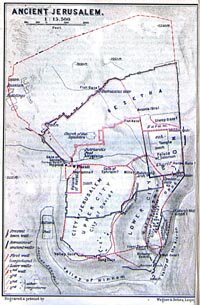 Jerusalem is the holiest city of Judaism (since the 10th century BCE) and some denominations of Christianity (since the 5th century CE) and, after Mecca and Medina, the third holiest city of Islam (since the 7th century CE). A heterogeneous city, Jerusalem represents a wide range of national, religious, and socioeconomic groups. The section called the "Old City" is surrounded by walls and consists of four quarters: Armenian, Christian, Jewish, and Muslim.
Jerusalem is the holiest city of Judaism (since the 10th century BCE) and some denominations of Christianity (since the 5th century CE) and, after Mecca and Medina, the third holiest city of Islam (since the 7th century CE). A heterogeneous city, Jerusalem represents a wide range of national, religious, and socioeconomic groups. The section called the "Old City" is surrounded by walls and consists of four quarters: Armenian, Christian, Jewish, and Muslim. The status of the united Jerusalem as Israel's capital is not widely recognised by the international community and Israel's annexation of East Jerusalem is particularly controversial.
Jerusalem's Old City Wall encompasses an area of barely 1km². The existing wall was built in the 16th century (1535-1538) by the Sultan Suleiman the Magnificent of the Ottoman Turks. The 4,018 meter long wall incorporates older parts from the Second Temple, Roman, Byzantine and Medieval periods.
Before King David's conquest of Jerusalem (2 Samuel 5:6-10) in the 10th century BC the city was known as Jebus and the home of the Jebusites. The Bible describes the city as heavily fortified with a strong city wall but not much is known about it.
King Solomon extended the city walls. In about 440 BC, under the Persian empire, Nehemiah arrived from Babylon and rebuilt them.
In AD 41-44 Herod Agrippa, king of Judea, built a new city wall known as the "Third Wall".
More...


No comments:
Post a Comment